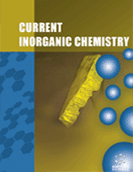Abstract
A kind of molecule-based magnets, metal-assembled complexes tend to possess low-dimensionalities for their magnetic lattices. Heat capacity calorimetry is a powerful tool for elucidation of the magnetic properties of metal-assembled complexes. Heat capacity measurements were carried out for the one-dimensional metal-assembled complexes MnIICuII(obbz).nH2O (obbz = oxamidobis(benzoato), n = 1, 5) and two-dimensional metal-assembled complexes NBu4[MIICrIII(ox)3] (Bu = n-butyl; M = Cu, Fe; ox = oxalato) and PPh4[MnIICrIII(ox)3] (Ph = phenyl). MnIICuII(obbz).5H2O undergoes an antiferromagnetic phase transition at TN = 2.18 K and have a heat capacity hump above TN, which can be reproduced well by the spin quantum number S = 2 one-dimensional ferromagnetic Heisenberg model with the intrachain exchange interaction J/kB = 0.75 K, where kB is the Boltzmann constant. Partially dehydrated MnIICuII(obbz)H2O exhibits a ferrimagnetic phase transition at Tc = 17 K and shows a heat capacity tail above Tc, which can be reproduced rather by the S = 2 two-dimensional ferromagnetic Heisenberg models. NBu4[CuIICrIII(ox)3], NBu4[FeIICrIII(ox)3], and PPh4[MnCr(ox)3] indicate ferromagnetic phase transitions at TC = 6.98 K, 12.0 K, and 5.85 K, respectively, and heat capacity tails above TC, which can be reproduced well by the two-dimensional ferromagnetic Heisenberg models of honeycomb lattice with the intralayer exchange interactions J/kB = 5.0 K, 2.5 K, and 0.95 K, respectively.
Keywords: Heat capacity, high-temperature series expansion, magnetic entropy, magnetic phase transition, metal-assembled complex, molecule-based magnet, low dimensionality, spin wave.
Graphical Abstract
 4
4

